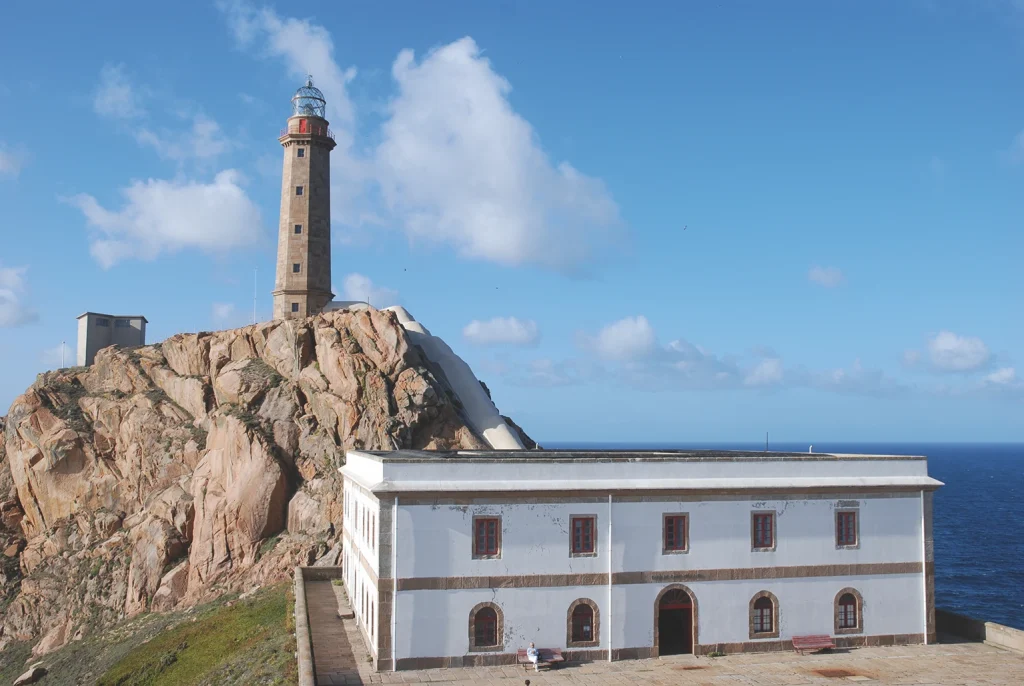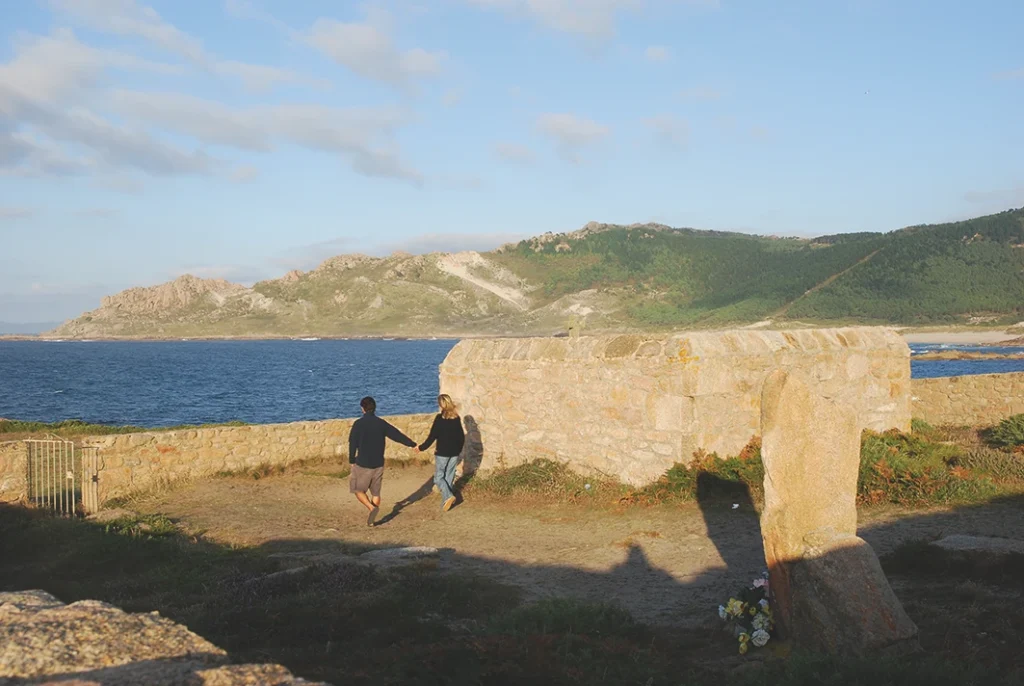The granite promontory of cape Vilán extends northwards and ends at the isle of O Vilán de Fóra. The entire headland has a rugged coast with steep cliffs that descend almost vertically to the sea. The coastline is full of rocky sandbanks that are very dangerous for navigation. They have been the cause of many tragedies at sea and the main reason why a lighthouse was built here.
The first maritime beacon was placed here in 1854. This was the old lighthouse that was built on a slight elevation to the south of the present lighthouse. The building was poorly designed and did not meet the conditions for signalling that such a hazardous part of the coast required. It was small, emitted a weak light and was badly located. Only some parts of the tower remain today.
The bad location and poor technical conditions of the first lighthouse soon led to plans for the construction of a new one placed closer to the sea on the promontory.

The engineers Francisco Lizárraga and Adolfo Pequeño were commissioned to design a new lighthouse, which was put out to tender in 1886. The stone was taken from the quarry of Pena Maior, about five kilometres away. The complex nature of the project caused the building works to last for five years. It started to operate on 15 January 1896.
It was the first lighthouse in Spain to use electricity produced by two steam engines. The personnel consisted of six keepers, including the engine room operator and stoker, and later included another engine room operator and another keeper.
The octagonal tower is made of granite blocks and reaches a height of 25 metres from the ground, including the lantern, and 104 m above sea level.
The lack of available terrain surrounding the tower obliged the designers to build the living quarters and the engine room on the esplanade below. The building to house the keepers initially had just one floor and another was added in 1909. Electric current by cable arrived in 1924 and so the steam engine room was demolished and the vacant lot was converted into the forecourt in front of the living quarters.
A Telefunken spark radio beacon was installed in 1922 to emit a signal in Morse code similar to the one emitted by the light. The lantern rotation mechanism was replaced in 1926, and the siren, new optics and lantern were installed in 1962.
Some of the parts that were removed are now on display in a small museum on the ground floor of the building that include the turbine of the old engine and the optical system with the electric arc lamp that was removed in 1962.

The surroundings of cape Vilán are also of great interest because of the colony of marine birds that nest here, like the black-legged kittiwake, the common murre and the double-crested cormorant.